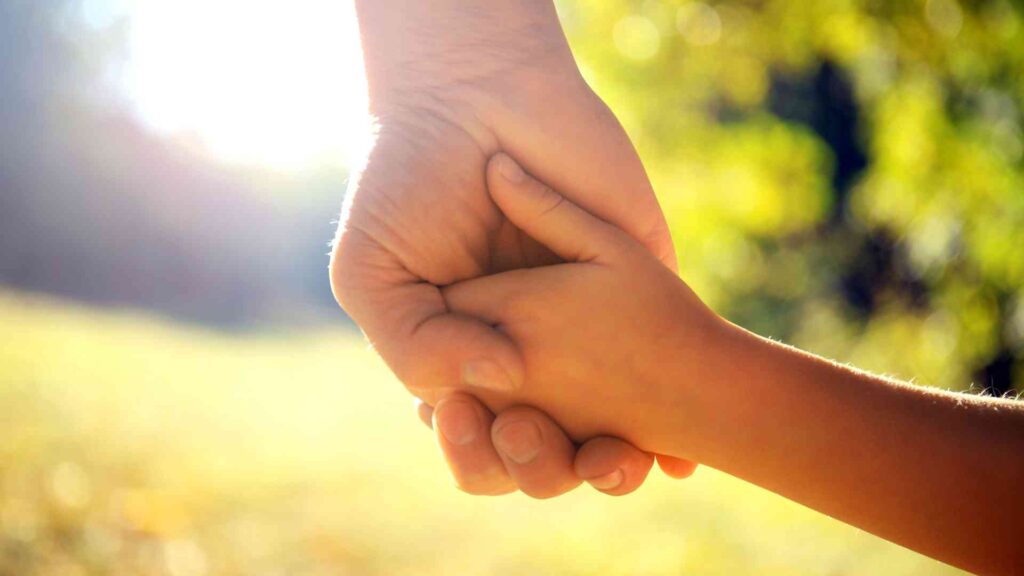यौन स्वास्थ्य के सभी पहलुओं के लिए व्यापक जानकारी प्राप्त करें और अपने यौन कल्याण को सशक्त बनाने के लिए संसाधन और मार्गदर्शन खोजें।
Erectile dysfunction (ED) is a condition that affects many men worldwide, leading to significant stress,…
यौन स्वास्थ्य के सभी पहलुओं के लिए व्यापक जानकारी प्राप्त करें और अपने यौन कल्याण को सशक्त बनाने के लिए संसाधन और मार्गदर्शन खोजें।
Erectile dysfunction (ED) is a condition that affects many men worldwide, leading to significant stress,…
Feeling nervous about sexual performance, known as Sexual Performance Anxiety (SPA), is pretty common. But…
The underlying cause as well as the severity of pain determine the varied treatment approaches…
Sleep-related painful erection (SRPE) is a rare condition where people get painful erections while they’re…
The International Society for the Study of Women’s Sexual Health describes Hypoactive sexual desire disorder…
Painful erections never indicate normalcy, and sometimes signal a medical emergency. Severe pain may necessitate…
Assertiveness is a crucial skill that enhances communication, reduces stress, and promotes self-confidence. It enables…
Disorganized attachment, also called fearful-avoidant, describes an insecure attachment style where individuals fear close relationships.
People with this style often struggle with how to act in relationships, employing both anxious (emotional hyper-activation) and avoidant (emotional deactivation) strategies to ease their fears.
This contradictory behavior, along with unstable identity and unpredictable mental states, can harm their ability to sustain healthy relationships.
विषयसूची
विषयसूची
From birth, babies begin bonding with their caregivers, typically their parents, relying entirely on them for the first few years.
Caregivers carry the responsibility of meeting the child’s basic physiological needs like food and shelter, as well as providing emotional support through soothing and caring actions.
When caregivers are sensitive and responsive to these needs, a secure attachment forms, where the child feels safe in their presence and learns to trust others.
However, if the child perceives that their needs are consistently unmet or that caregivers are emotionally unavailable, a secure bond may not develop.
Insecure attachment during childhood tends to persist into adulthood, as early experiences shape attachment styles, influencing how individuals perceive and act in relationships later in life.

Disorganized attachment emerges from a blend of biological factors like genetics and temperament, coupled with exposure to fear-inducing environments during upbringing.
Infants instinctively seek comfort from their caregivers when distressed, yet if the caregiver also evokes fear, the infant paradoxically desires to avoid them.
This creates a perplexing scenario for the child: they simultaneously crave and shun the source of their fear to alleviate it.
It’s crucial to recognize that disorganized attachment isn’t solely the consequence of childhood abuse or maltreatment, as commonly assumed.
Not all abused children develop a disorganized attachment style, and not every individual with such a style experienced abuse during childhood.
Even if a caregiver isn’t abusive, they may not provide a sense of safety if they harbor unresolved trauma or loss, potentially projecting their distress onto the child.
Children raised in adverse environments are at increased risk of developing signs of disorganized attachment. This can stem from experiences like neglect, physical or emotional abuse, parental substance abuse, domestic violence, or other significant adversities.
Behaviors that can be potentially frightening from parents or caregivers include:
These children exhibit behaviors not seen in secure, avoidant, or anxious children:
Disorganized children seem uncertain and apprehensive towards their caregivers due to conflicting motivations: they desire to approach but also fear doing so.
These children have heightened stress sensitivity and are not easily comforted by caregivers, often remaining distressed for prolonged periods.


Similar to disorganized children, disorganized adults grapple with conflicting emotions in relationships, oscillating between anxiety and avoidance.
Individuals with an avoidant attachment style seek distance and independence due to unreliable, punitive, or unsupportive caregivers during childhood, fearing further rejection and thus suppressing their need for attachment and intimacy.
Ironically, this fear of abandonment intensifies their desire for attachment, manifesting in clingy and attention-seeking behavior.
Other indicators of disorganized attachment in adults include:

For disorganized individuals, relationships can be triggering due to their internal conflicts about their desires. They simultaneously lack trust in others while desperately yearning for love and affection.
They anticipate being hurt, disappointed, or rejected by significant others, leading them to be hyper-vigilant for signs of impending abandonment.
When triggered, their behavior oscillates between anxiety and avoidance, which can be confusing and distressing for their partner.
Despite the intensity of their reactions, disorganized individuals may feel justified in their responses because they perceive the threat of abandonment as legitimate.
Emotional triggers for disorganized attachment may include:
Addressing these triggers and fostering a more secure attachment requires disorganized individuals to confront their inner conflicts and employ self-regulation strategies to manage anxiety and avoidance tendencies.
Living with a disorganized attachment style can feel like navigating a game without understanding the rules.
You may desire social interaction but lack the skills to engage effectively. Each interaction feels uncertain, leaving you bewildered by the outcomes.
Fortunately, healing is possible, and crucial for your well-being, your relationships, and the future of your children.
Disorganized attachment can create distress and confusion in social interactions and intimacy, damaging relationships and risking loss of important connections.
Interacting with someone with this attachment style can be challenging due to their unpredictability, suspicion, and lack of trust.
A caregiver’s disorganized attachment style is a significant predictor of a child’s emotional development. Therefore, unresolved trauma or loss in a parent increases the likelihood of raising a child with a disorganized attachment style.

For individuals with a disorganized attachment style, a significant issue is the fear of being hurt by someone they trust. The instinctual response may be to avoid trusting anyone altogether, but this approach isn’t productive in the long run.
Simply distancing oneself from others won’t address the underlying trauma or childhood experiences. To cultivate secure relationships, learning to trust others is essential.
While this may sound straightforward, it can be challenging for adults with a disorganized attachment style. It’s important not to rush the process and to start gradually.
Seeking support from a psychotherapist can be beneficial. Therapists provide a safe, non-judgmental space where individuals can explore their experiences, emotions, and needs.
Alternatively, self-healing is an option that allows individuals to progress at their own pace without immediately trusting a stranger. This approach can be a promising starting point for those hesitant to trust others.
Here’s some advice on self-regulating triggers and building confidence in life and relationships:

Recognize that your insecure attachment likely developed due to factors beyond your control. Be kind to yourself, noticing self-critical thoughts and replacing them with self-compassion. Treat yourself with patience and understanding, as you would a close friend. Accept where you are now and focus on healing and growth. Embracing your strengths and imperfections will empower you to make positive changes.
Gain insight into your triggers, beliefs, and behaviors to facilitate change. Educate yourself on attachment theory and disorganized attachment styles. Observe your thoughts, emotions, and actions without judgment. Mindfulness practices can help cultivate present-moment awareness and non-judgmental acceptance. Keeping a journal can aid in identifying patterns, processing emotions, and tracking progress.

Emotional triggers can activate your fight or flight response, limiting rational thought and leading to unconscious reactions. Consistent use of grounding techniques can help manage emotions, both in general and during triggering moments. These techniques may include deep breathing exercises, sensory grounding (focusing on sights, sounds, or physical sensations), or progressive muscle relaxation.
Grounding techniques include:
To heal the wounds of the past, a helpful technique involves mentally revisiting your childhood and engaging with your child-self with understanding, compassion, and support.
Due to inconsistent, neglectful, and possibly abusive caregiving experiences, you were not adequately acknowledged, cared for, or addressed during childhood. By comforting your inner child, you can provide a sense of validation and acceptance to your child-self.
You can revisit and reimagine past experiences from a more compassionate and supportive perspective. Tell your child-self that it was not their fault and acknowledge that it’s okay to feel sad or angry about the way you may have been treated.
Comforting your inner child can diminish some of the power that the past may still hold over you, allowing you to step into your adult self with more confidence.
The inner conflict and emotional instability you experience can obscure your sense of identity and desires. Oscillating between craving love and support from others and wanting to push them away can be draining.
It’s crucial to recognize that your longing for closeness and comfort is natural; the underlying cause of your anxiety and avoidance is fear. Through therapy or self-reflective practices aimed at enhancing self-esteem and self-worth, you can confront and release this fear, embracing your need for connection.
Building self-esteem requires patience and dedication, but as you cultivate a more unified sense of self, you’ll lay the groundwork for healthier attachment patterns. You’ll come to realize that your needs are legitimate, you deserve love, and you can express your emotions freely without fear of judgment.
Here’s some advice on establishing boundaries:
Remember, setting boundaries is about prioritizing your own well-being and self-respect. Saying no to others can be a way of saying yes to yourself, fostering healthier relationships and self-trust.
Once you’ve established self-regulation strategies, consider incorporating secure behaviors to demonstrate your ability to manage emotions effectively.
Initially, you may experience heightened anxiety and a desire to withdraw. Start with small changes and persist in practicing; over time, discomfort and anxiety will diminish.
When triggered, ask yourself how a secure person would think and act in the situation:
By embracing secure behaviors, you’ll foster emotional resilience and strengthen your relationships.
Being in a relationship with a disorganized individual presents challenges and complexities, but like anyone else, they also possess positive and appealing traits. Working through these difficulties can yield rewards and growth for both parties involved.
The following advice is tailored for individuals in close relationships with disorganized partners. However, for the relationship to thrive, both individuals need to address their insecurities and behaviors and seek assistance if needed.

Effective communication is crucial for any relationship. Express needs and concerns calmly and constructively, while actively listening to your partner. Active listening entails asking open-ended questions, validating their perspective, and showing genuine interest.
The goal of communication should be finding solutions rather than assigning blame or causing distress. If you’re committed to making the relationship work, focus on problem-solving rather than dwelling on issues.
Establishing and upholding boundaries is vital for your well-being and the health of the relationship. Disorganized individuals may struggle with boundaries, so it’s important to set clear expectations and consequences for boundary violations.
For instance, if faced with aggressive behavior, agree to disengage until the situation calms down.
Individuals with a disorganized attachment style aren’t inherently malicious; they simply lack coping mechanisms for managing emotions and navigating relationships. While they must work on their issues, they benefit from partners who show compassion and patience.
Acknowledge their struggles, focus on their positive attributes, and express appreciation for them. Simply being present and supportive can make a significant difference. Remember to prioritize your own well-being too.
Consider seeking the guidance of a couples therapist to navigate relationship challenges. A therapist can identify unhealthy patterns, facilitate communication, and help each partner articulate their needs effectively.
Both partners must be committed to therapy for it to be effective in addressing relationship dynamics.
A disorganized attachment style involves conflicting emotions and behaviors in relationships due to past traumas. Healing involves self-awareness, setting boundaries, fostering secure behaviors, and seeking therapy for effective communication and mutual understanding.
संदर्भ
एमबीबीएस और एमडी डिग्री वाली मेडिकल डॉक्टर डॉ. निष्ठा पोषण और कल्याण के प्रति गहरी रुचि रखती हैं। शारीरिक और मानसिक स्वास्थ्य के साथ महत्वपूर्ण संघर्षों से भरी उनकी व्यक्तिगत यात्रा ने उन्हें अनगिनत व्यक्तियों के सामने आने वाली चुनौतियों के प्रति एक अद्वितीय सहानुभूति और अंतर्दृष्टि प्रदान की है। अपने स्वयं के अनुभवों से प्रेरित होकर, वह व्यावहारिक, साक्ष्य-समर्थित मार्गदर्शन प्रदान करने के लिए अपनी पृष्ठभूमि का लाभ उठाती है, जिससे दूसरों को समग्र कल्याण प्राप्त करने के रास्ते पर सशक्त बनाया जा सके। डॉ. निष्ठा वास्तव में मन और शरीर के अंतर्संबंध में विश्वास करती हैं। वह जीवन में संतुलन और खुशी प्राप्त करने की दिशा में एक महत्वपूर्ण कदम के रूप में इस संबंध को समझने के महत्व पर जोर देती है।

